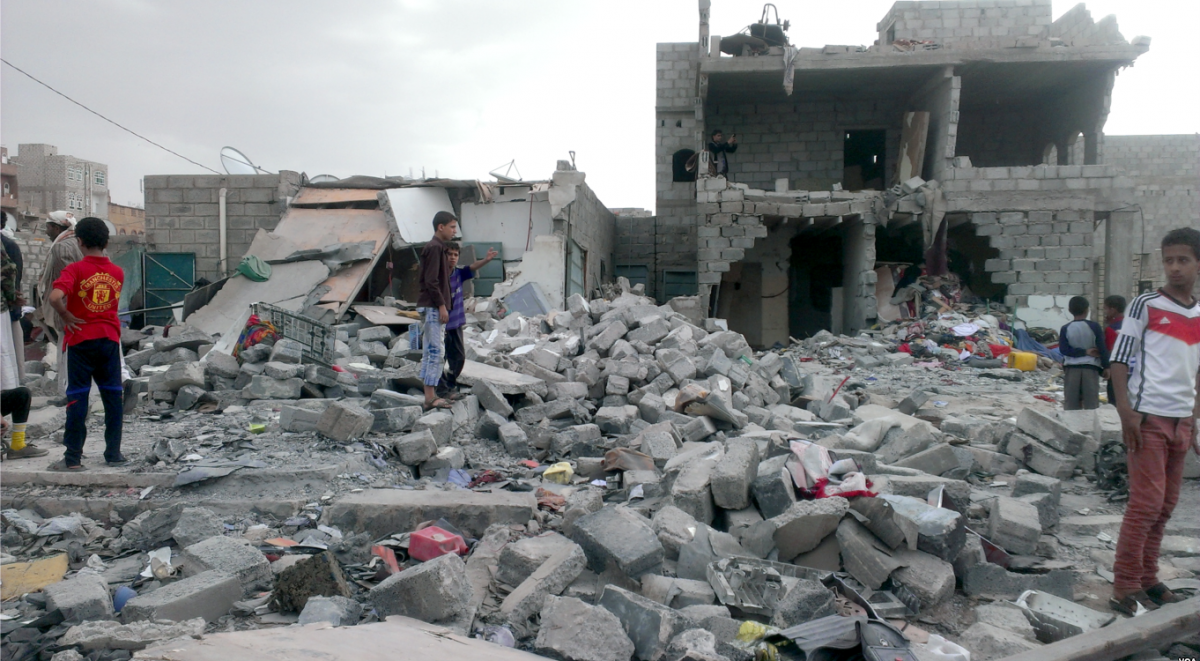
By Olga Adhikari
We go on in our lives, seemingly aware of the privileges we possess but not quite. As we go on, one of the largest humanitarian crises of our time continues to roll on, thousands of children and adults alike have faced death either through malnutrition, military action or epidemics, such as the cholera epidemic currently running rampant in Yemen. News outlets on television tend not to cover the issue in depth and we scarcely pay attention to news stories circling the internet, reducing them to the typical images of children and parents in pain – something we are often exposed to and that has been normalized in our minds. However, not many people know of where the current Yemen crisis arose from and the vast implications it has in terms of the rising amount of refugees (an occurrence President Trump gladly latched on to in his executive orders regarding his “travel bans”), health care delivered in Yemen and the conditions in which people reside in.
What exactly is going in Yemen?
Yemen, as of now, is experiencing one of the worst man-made humanitarian crises in history which has had tragic effects:
- 22 million people in need
- 13.1 million people targeted for assistance
- 11.3 million children in need
- 1.1 million suspected cases of cholera since April 2017
- 17.8 million people in food crisis
- 400 000 children suffering from severe acute malnutrition
- 8.8 thousand civilians killed since April 2015
- 50.6 thousand people wounded since April 2015
- 2 million internally displaced persons
Owing to the nature of the proxy war between Iran and Saudi Arabia which is being played out on Yemeni soil, civilian institutions and ports are being intentionally bombed by Saudi air forces. The bombing of sites such as ports halts the distribution of staple food products which is crucial as ca. 50% of Yemen’s food has to be imported due to its geographical composition which is roughly 90% desert, arid or semi-arid terrain. An important blow to the provision of humanitarian aid in Yemen was the strategic bombing of Sanaa Airport in the Yemeni capital in November of 2017 which severely limited the amount of medical aid coming through to the country. This was a particularly malicious blow seeing as flights were already limited to UN aid flights by the Saudis in August 2016. Owing to these planned attacks many are left in urgent need of aid, left without a home, malnourished or dangerously ill.
Another key factor of the humanitarian crisis in Yemen is the breakout of cholera in October 2016, it is also incidentally the worst outbreak of cholera in recorded history. The damaged water infrastructure in Yemen coupled with the water scarcity in the country, sky-high water prices and the urgent need of sanitation assistance in many permanent and temporary homes laid a very favorable environment for cholera to thrive and ravage the nation’s citizens. Even healthy persons infected with cholera can die a couple of hours following infection if fluids are not properly replaced – an issue in desert Yemen.
The internal displacement of people is yet another main shaper of why the situation in Yemen can be deemed a humanitarian crisis. With 2,014,026 people displaced as of March 2018, shelter is in urgent demand as a direct result of the destruction of civilian homes in the recently intensified fighting. Conditions at these “native refugee” camps are dire and there is only so much that foreign aid organisations can do in order to alleviate the daily struggles of the Yemeni people. Food in these camps is kept to the minimal requirement, sanitation systems may not be up to standard and only the most severe cases gain the attention of medical staff.
That was a brief overview of the humanitarian situation in Yemen, the fighting going on in Yemen and precisely why it is going on is a completely different story.
Roots of war
For the past three years there has been a war going on in Yemen between Houthi rebels, backed by Iran, and the Yemeni government, backed by Saudi Arabia. During the Arab Spring in Yemen (2011), hundreds were killed in Yemen during mass protests calling for the recall of Saleh due to the corruption and human rights abuse which was prevalent during his regime. Forced to resign and sign a power-transfer deal, he was replaced by Abd Rabbu Mansour Hadi – yet another corrupt leader committing human rights violations. Under his rule, conflict with Houthis in the north was renewed – a step forward towards the impending civil war.
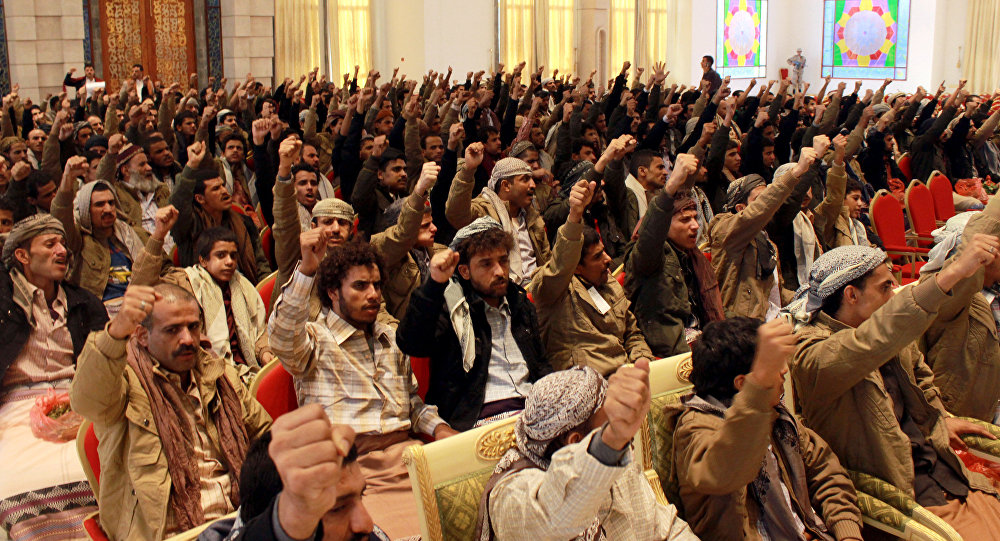
Houthi rebels voting for peace negotiations/AFP Abdel Rahman Abdallah
The Houthis
- The Houthis are a north Yemeni tribe which follows a Shi’ite sect called Zaidism.
- The tribe was deposed as ruler of Northern Yemen in the 1960s.
- Houthi regions have been largely neglected by the centralized Yemeni government.
- Following Abdrabbuh Mansour Hadi’s ascension to the position of president, Houthis felt politically discriminated upon and exempt from the profits of Yemeni national resources.
- In 2014, after wide-scale Houthi dissent, they took the capital, Sana’a – many Yemenis supported them in the light of the government’s shortcomings in terms of food security.
- In January 2015, the rebels seized the presidential residency over disagreements with the Yemeni government over national federalization.
- Hadi was placed under house arrest, the Houthis announced an interim government, however, following Hadi’s escape, clashes between the loyalist government and the Houthi rebels turned into a full-scale civil war.
Following the capture of Sana’a and Hadi’s escape, nationwide conflict broke out and Saudi Arabia entered the war, supporting Hadi. Why? – Saudi Arabia was panicking that a domination of Iran backed forces (the Houthis) in Yemen, a nation bordering Saudi Arabia, would pose a threat to its position in the Middle East.
In effect, Yemen is being bombed, its citizens maltreated and dying all as a result of a power struggle for dominance in the Middle East between Iran and Saudi Arabia – the Shi’a world and the Sunni world. Yemen is just another country in the battle for influence; Iran has spheres of influence in Syria through the Assad regime, Lebanon through the Hezbollah and in Iraq through the Iranian backed Shia government. Meanwhile, Saudi Arabia holds a stronghold over Jordan, Egypt, Qatar, the UAE, Kuwait, Sudan and Morocco.
The nature of the war itself, too, is rather peculiar as the Saudis and their allies seem to have set it as a goal for themselves to bomb as many civilian institutions and homes as possible as well as disabling their access to medicine and food. Although they have implied that civilian deaths caused by Saudi arms are a result of the inaccuracy of aim of their weapons and that they in fact attempt to limit civilian casualties while eliminating the Houthis and terrorist groups, this is quite controversial.
Even if in some cases, the Saudi-led coalition had targeted legitimate military objectives, the panel finds it highly unlikely that the IHL [International Humanitarian Law] principles of proportionality, and precautions in attack were met – UN report on Human Rights abuses in Yemen.
To add to insult, the presence of UAE run prisons for the detention of suspected Al Qaeda or Islamic State militants (despite being denied the right to a trial or being charged) where Yemenis are raped and tortured without being informed of their alleged crime. Amnesty International has deemed the actions of the Emirates as war crimes and an infringement on human rights with their Crisis Response Director, Tirana Hassan, stating that:
“The families of these detainees find themselves in an endless nightmare where their loved ones have been forcibly disappeared by UAE-backed forces. When they demand to know where their loved ones are held, or if they are even still alive, their requests are met with silence or intimidation.”
This declaration is a very accurate indicator of the mood of the conflict; Yemenis are left brutally treated without knowing their crimes, which for the majority of Yemenis do not even exist. They are being persecuted and bombed for invisible crimes.
The Implications of the Yemeni War on Migration
As aforementioned, the war in Yemen has led to the internal displacement of two million people, however, it has also contributed to the flight of 190 352 Yemenis to nearby nations, with Somalia, Ethiopia, and Iraq proving most popular. What is very ironic about the situation is that the opposite is happening as well – migrants from Northern African nations torn by conflict (mainly Eritrea, Ethiopia, and Somalia) are attempting to make the journey towards a better life, or at least an escape from their realities, in Saudi Arabi and neighboring countries through Yemen.
As of February 2018, 280 692 African migrants are seeking refuge in Yemen, unable to make the full journey to Saudi. The ca. 2000 km long un-patrolled Yemeni coastline makes arriving in Yemen by boat, usually smuggled from Djibouti, simple, however, most of these migrants arrive in Shabwah – a province which provides a stronghold for Al Qaeda and a hub for migrant smuggling. The migrants are often snatched from the streets by Ministry of Interior police forces and held in dire conditions in detention camps where they are regularly abused by the staff. Human trafficking too is rife, and it has been reported that the African migrants where being deported to Djibouti by functionaries of the Ministry of Interior in cooperation with the very smugglers that got them to Yemen. Owing to the precarious nature of these deportations via sea, people have met their end in the sea – a proof of the moral corruption of the Yemeni government who is, after all, overseeing these actions.
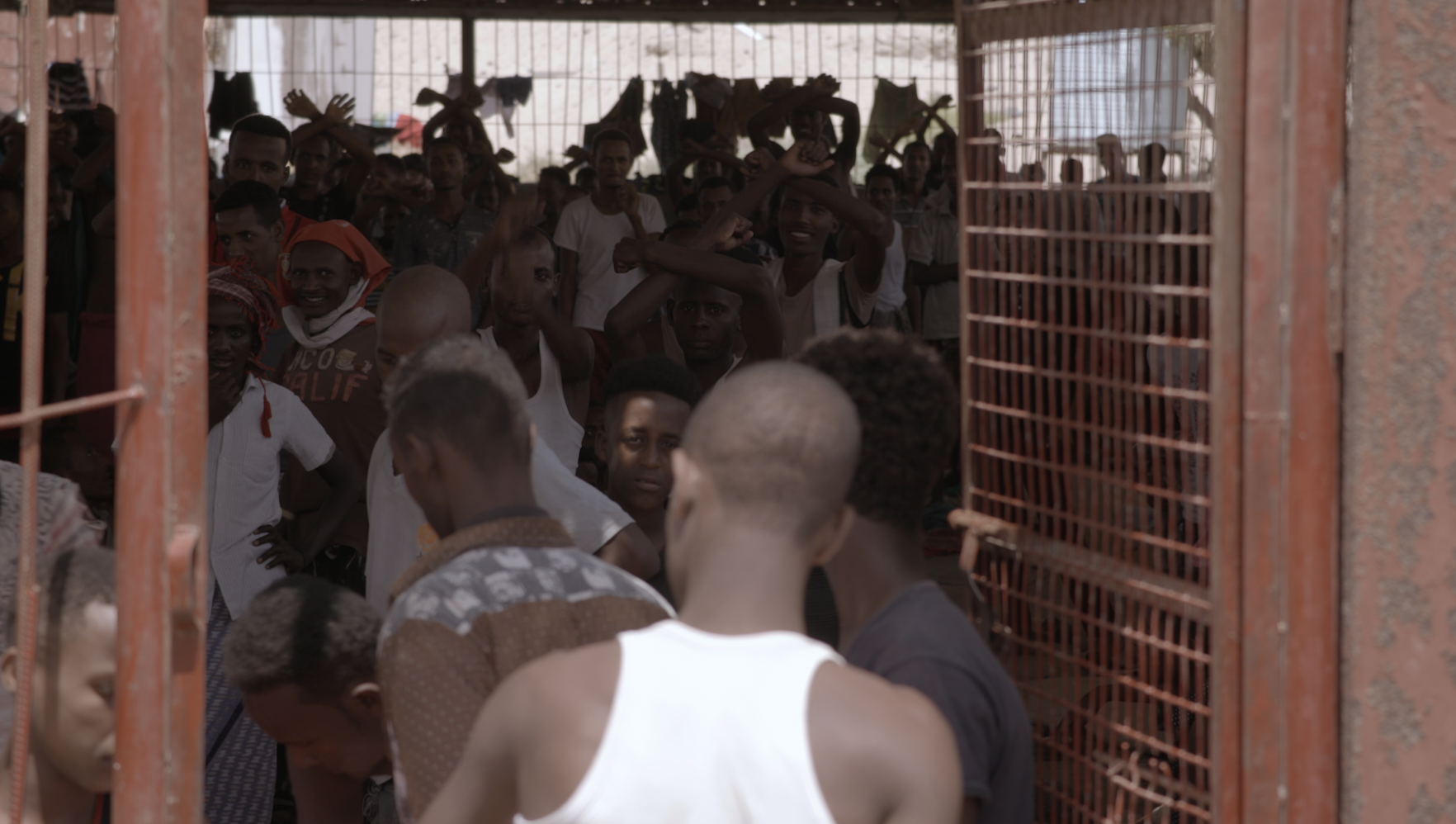
A Yemeni migrant detention center/Vice News
In the case of the Yemeni war refugees, they are mostly seen as unwelcome in most countries. Many flee to refugee camps near Yemen only to experience hunger, indifference from humanitarian aid workers and harsh living conditions. Those living in the Djibouti Markazi refugee camp are given 500 Djiboutian Francs per family per month (the equivalent of $2.8) in order to supplement the spoiled food they are being given. Many wish to return to Yemen to at least feel at home.
For those seeking asylum outside of the areas surrounding Yemen, options are limited as not many nations wish to accommodate refugees specifically from Yemen. In fact, Saudi Arabia is leading in mass deportations of Yemenis to their homeland which is currently being bombed by the very country. As of May 2018, 17 000 or the 700 000 Yemenis residing in Saudi Arabia have been expelled from the nation. Following the appearance of the fact that South Korea had been a signatory of the UN Refugee Convention, many young Yemenis (predominantly men) tried to venture towards the island of Jeju in S. Korea via Malaysia – both Malaysia and Jeju were two of the few countries which accept Yemenis without a visa. Additionally, Jeju seemed like a gateway to finding work and education in Seoul to many. Hundreds made the journey only to be met by progressively hostile attitudes resulting from the low concentration of migrants and refugees in South Korea. The migrants are currently stuck in a kind of limbo on Jeju Island as they have been disabled from reaching mainland South Korea, returning to Malaysia proves to be too much of an expense, and the International Organization for Migration (IOM) does not regularly assist in the repatriation of Yemenis as a result of the high-risk status of Yemen.
In summary, Yemenis who wish to escape from the internal turmoil of their motherland are faced with a meager fate of a continued life in refugee camps where conditions can be less tolerable than those at home or are alternatively met with direct hostility arising from xenophobic attitudes and Islamophobia sprayed amongst citizens of countries by their respective governments. The manner in which mass media sources have manipulated the coverage of the Yemeni War and the crisis induced by it has also contributed to the rise of these attitudes and the belief that the Yemeni crisis is not “a real crisis” and that refugees escaping from the country are “fake” – the impact of the Trumpian rhetoric in action is visible in this instance. Saudi Arabia’s close alliances with many countries of prominence on the stage of global politics and the financial leverage it holds on them also has a direct translation onto the media coverage of the Yemeni Crisis in those countries.
Over the course of the summer, the Saudi government blocked several prominent BBC journalists from entering Yemen, despite the fact that they had all the necessary paperwork – Connor Schoen, The Harvard Political Review
Again, the Yemenis are being held accountable for a war they themselves are attempting to escape from.
The Implications of the Yemeni War for Global Health
War-torn regions are frequently home to outbreaks of diseases as a result of the reduced level of attention paid towards personal health in the light of personal safety. Additionally, periods of war are associated with lower calorie intake and in turn, malnutrition. The health issues that appear with the dawn of war are no stranger to Yemen which has experienced a mass cholera outbreak, as aforementioned, 60% of the population is food insecure and supplying humanitarian relief, such as staple food products and medicines is challenging, considering the dismal amount of functioning ports.
Malnutrition and Food Relief
Out of the 17.8 million people in Yemen requiring emergency food assistance, 8 million are severely food insecure and so rely solely on external assistance as a result of lack of financial funds or inability to access food. Out of all these malnourished people, the scarcity of food supply has affected nursing and pregnant women, and children most seriously.
For hundreds of thousands of young children spread across Yemen malnutrition is not a temporary state of things – the extreme lack of food children under the age of five meet has lasting effects on their lives:
The damage to physical and cognitive development during the first two years of a child’s life is largely irreversible – UNICEF Canada
This war that Yemeni children have had to face will not only scar them psychologically for the majority of their lives but the damage to cognitive development caused will most likely induce learning difficulties and will thus put them at a disadvantage in the workplace in the future trapping them and their family in a cycle of poverty.
The supply of food relief is increasingly difficult as more and more locations of food delivery are being targeted by air raids and in the cases when food does reach Yemen, it is either scarce and does not meet demand or it is left to rot in warehouses as there is no transport available to distribute it. Aid organisations cannot solve the issue of malnourishment in Yemen completely as practically the entire country is in need of food aid, people get turned away from receiving any food from organisations, such as the WFP, on a frequent basis. Even if there were no financial limitations going towards solving the near-famine in Yemen, there is no guarantee it would actually get to those in need.
One of the only ways to ensure that food aid is going where it needs to go is to end the conflict as the main obstacles to food aid are Saudi limitations on commodities being brought into ports and Houthi raids on the food aid and consequently, their sale on the black market. Saudis may be one of Yemen’s top humanitarian donors with a combined amount of ca. $1 billion going towards humanitarian aid in Yemen from Saudi Arabia and the UAE in 2018 but what good is that if they’re one of the main contributors to the strife running rampant in Yemen? It is possible that Saudi Arabia’s donations are meant to numb the effects of what they’ve sown in Yemen just enough so that the international community doesn’t break off diplomatic ties or so that not enough people die in order for it to be widely seen as a democide. As of now, many people are still seeing an illusion of Saudi Arabia authentically intervening in Yemen in order to eliminate a terrorist threat.
Healthcare
The medical aid provided by the Ministry of Public Health and Population has become increasingly insufficient for the Yemenese people as the demand for care provoked by wounds inflicted by the war, malnutrition or disease is not met by a sufficient amount of staff and hospital facilities. However, even these functioning facilities are at risk as they have been targeted by airstrikes in the past, such as the hospital in Abs, which has led to fewer than half of the healthcare facilities operating after two years of war. As a result, 15 million lack access to basic health care facilities which could’ve aided in the distribution of diphtheria vaccines, preventing the current outbreak in Yemen. This lack of access is often brought on by the vast swathes of road that many have to overcome in order to get to a hospital, as the currently functioning medical care institutions are often located in the larger cities, such as Taiz or Sana’a.
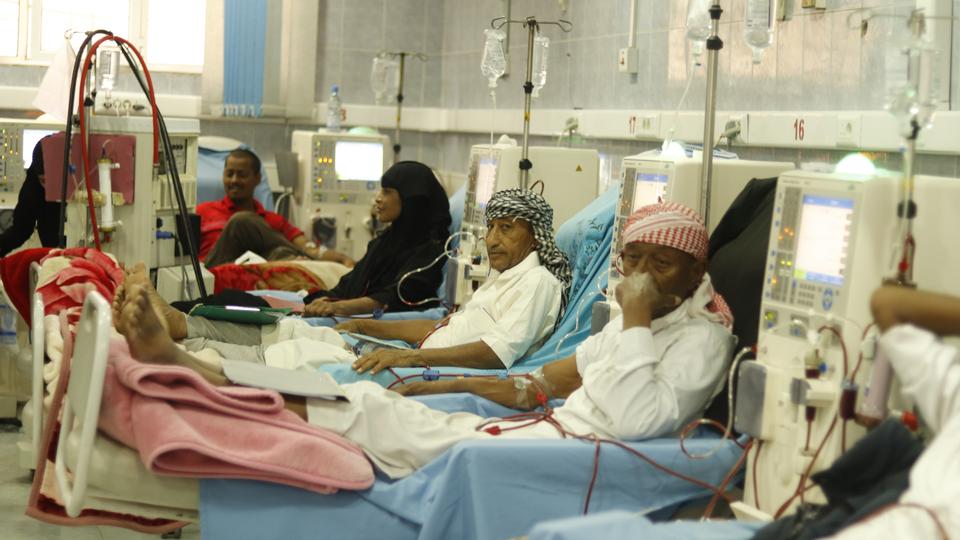
Yemenis waiting to be treated for kidney ailments/Azzam al-Zubairi/TRT World
However, there is a presence of organisations providing medical aid in Yemen, one of the most crucial ones being Medicins Sans Frontiers which focuses on providing health care in less urbanized areas, arranging mobile medical units, and supporting smaller hospitals. Their main aim is to “rebuild confidence in community-led government systems” so that the functioning of a village, for instance, is independent of parallel governments. But there is only so much that organisations like MSF can do as they are restricted in their actions due to the scarcity of medical supplies which has been brought on by the import-restricting enforced by the Saudi-led coalition. MSF has also stated that there is a lack of translation of funds raised by donors into humanitarian aid.
All in all, as with the food relief, the answer to these issues is the same – the Saudi-led coalition in Yemen needs to loosen restrictions on imported materials into Yemen in order for hospitals to be equipped and medical aid to be available. Without these restrictions being lifted, medical care in Yemen is seriously stunted and hospitals and the organisations supporting them are forced to prioritize one human life above another as a result of the scarcity of medicines and facilities.
Cholera Epidemic
Cholera is a widely preventable disease that often proves not to be fatal if appropriate rehydration procedures are applied, however, its presence is often a signal of an ineffective sanitary system, such as the one in Yemen. Furthermore, its mortality rates are higher in such countries as a poorly constructed sanitary system is often a sign of poverty and lack of access to fitting treatments. Cholera often entails dehydration and severe acute watery diarrhea which combined can lead to death. Most persons infected by the bacterium V. Cholerae do not show symptoms of cholera and most often are left unaffected, however, the bacteria can be present in the infected person’s feces and, through improper sanitation procedures, can contaminate drinking water sources and pose a risk to an increased amount of people.
The current wave of cholera in Yemen is believed to have triggered by rainfall in April 2017 which activated cholera bacteria which had been involved in a first, smaller wave in September 2016 during the dry season. Owing to the nature of cholera contamination, the rains allowed the bacteria to be spread to bodies of water which served as a source of household water for many. Additionally, taking into account the factor of overall water scarcity in Yemen, for many cholera contaminated water was the only option. These aspects have facilitated such a widespread cholera epidemic which has, as of May 2018, affected over a million people in a country of 30 million. Moreover, according to studies published in The Lancet Global Health journal, the pattern of cholera spreading most in the rainy season will endure and continue to take more lives come Spring.
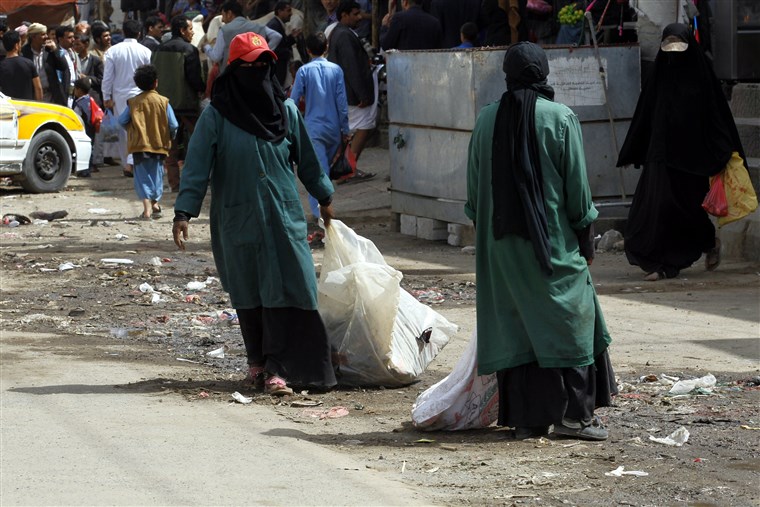
Sanitation workers cleaning up streets in Yemen during an anti-cholera campaign/EPA/Yahya Arhab
Owing to the disrupted medical aid, insufficient sanitary systems, and cramped conditions in IDP (internally displaced people)/refugee camps, it has proven very difficult to contain, prevent, and effectively treat the disease. Prevention would entail the provision of clean water and sanitary services, food safety measures and health education, however, water is already scarce, constructing appropriate sanitary infrastructure would be time and finance consuming and could possibly be destroyed, and health education is difficult to disperse in times of war. Nevertheless, if medical workers were to provide help in building latrines at an appropriate distance from bodies of water and education on food safety and health education, lessening the impact of cholera could be possible. But it could prove impossible to eradicate it completely during the war. Additionally, as a result of the mentioned restrictions on medical supplies, the delivery of cholera treatment can take place when it is already too late. Home treatment is possible with the availability of sugar and salt, however, these materials can prove to be scarce or simply not provided through food relief.
The Future of Yemen?
In conclusion, the issues underlined throughout the articles ultimately have one solution – end the war and restore peace and trade in the country in order to help affected Yemenis, who are without a doubt the majority of the population of Yemen. There have been peace talks and negotiations in the past, however, they have not had a lasting effect on the situation in Yemen. The first Yemen peace talks in two years are set to take place in September 2018 and may prove to be a breakthrough if they let go of the normalized pattern of diplomatic stalemate. It is believed that these talks could help release prisoners and detainees, commence flights to and from Sana’a airport, and cooperate with the Yemeni National Bank to maintain currency rates and counteract hyperinflation. Even if these talks amount to moderate changes, it will still be a step forward to ending the war in Yemen.
The international community could also potentially influence the outcome of the Yemeni war – especially countries involved in the selling of arms to the Saudi Arabian coalition and the arming of the Houthi rebels. The UK and US are some of the largest suppliers of arms to Saudi Arabia facilitating the whole ordeal. As of March 2018, nearly half of US arms exports are exported to Saudi Arabia, while the UK simultaneously exports around the same percentage of its arms to Saudi Arabia as well.
Under the UN arms trade treaty, they (the countries involved in the sale of arms) have an obligation to halt the supply of weapons if these are likely to be used for serious violations of international human rights or humanitarian law. – Patrick Wilcken, The Guardian
These countries; France, Italy, Canada, the US, amongst others, and their actions have a huge impact on the intensity and length of the war in Yemen as we know it – without the river of foreign arms flowing into Saudi Arabia, the civilian casualties should steadily decrease and so should the number of war crimes that are committed in Yemen on a regular basis. They should follow the path of Norway, Austria, and the Netherlands in denying licenses for arms sales to Saudi Arabia, except when the larger exporters do so (the UK and US), it will have a lasting effect.
In terms of Houthi involvement in the conflict, the rebels have expressed efforts to communicate with their opposition and potentially end the war:
We declare our initiative to halt naval military operations for a specific period and it could be extended and include all battle fronts on the ground if this move is reciprocated by the leadership of the coalition – chief of Houthi Supreme Political Committee, Mohammed Ali al-Houthi , Saba news agency
This declaration is most probably conditional, however, if a compromise were to be achieved between the coalition and the Houthis in terms of spheres of influence in Yemen, it could put a cap on the war, at least for a certain time.
BIBLIOGRAPHY
https://www.thelancet.com/journals/langlo/article/PIIS2214-109X(18)30230-4/fulltext
https://reliefweb.int/report/yemen/yemen-unhcr-update-march-2018
https://www.aljazeera.com/news/2018/08/yemen-worst-humanitarian-crisis-world-eu-180805070256555.html
https://www.aljazeera.com/news/2016/06/key-facts-war-yemen-160607112342462.html
https://www.reuters.com/article/us-yemen-security-explainer/why-yemen-is-at-war-idUSKBN1JB1TE
https://www.newyorker.com/news/news-desk/is-yemen-intentional-starvation-the-future-of-war
http://www.atlanticcouncil.org/blogs/menasource/the-problem-with-humanitarian-assistance-in-yemen
https://theintercept.com/2015/07/16/u-s-aid-yemen-rotting-away-virginia-warehouse-8-years/
https://nationalinterest.org/feature/america-has-chance-finish-the-war-yemen-26152
